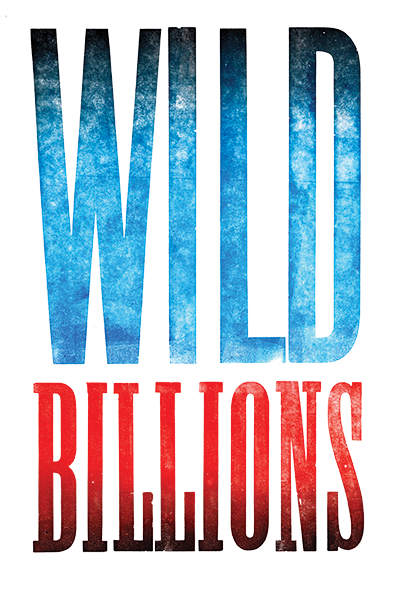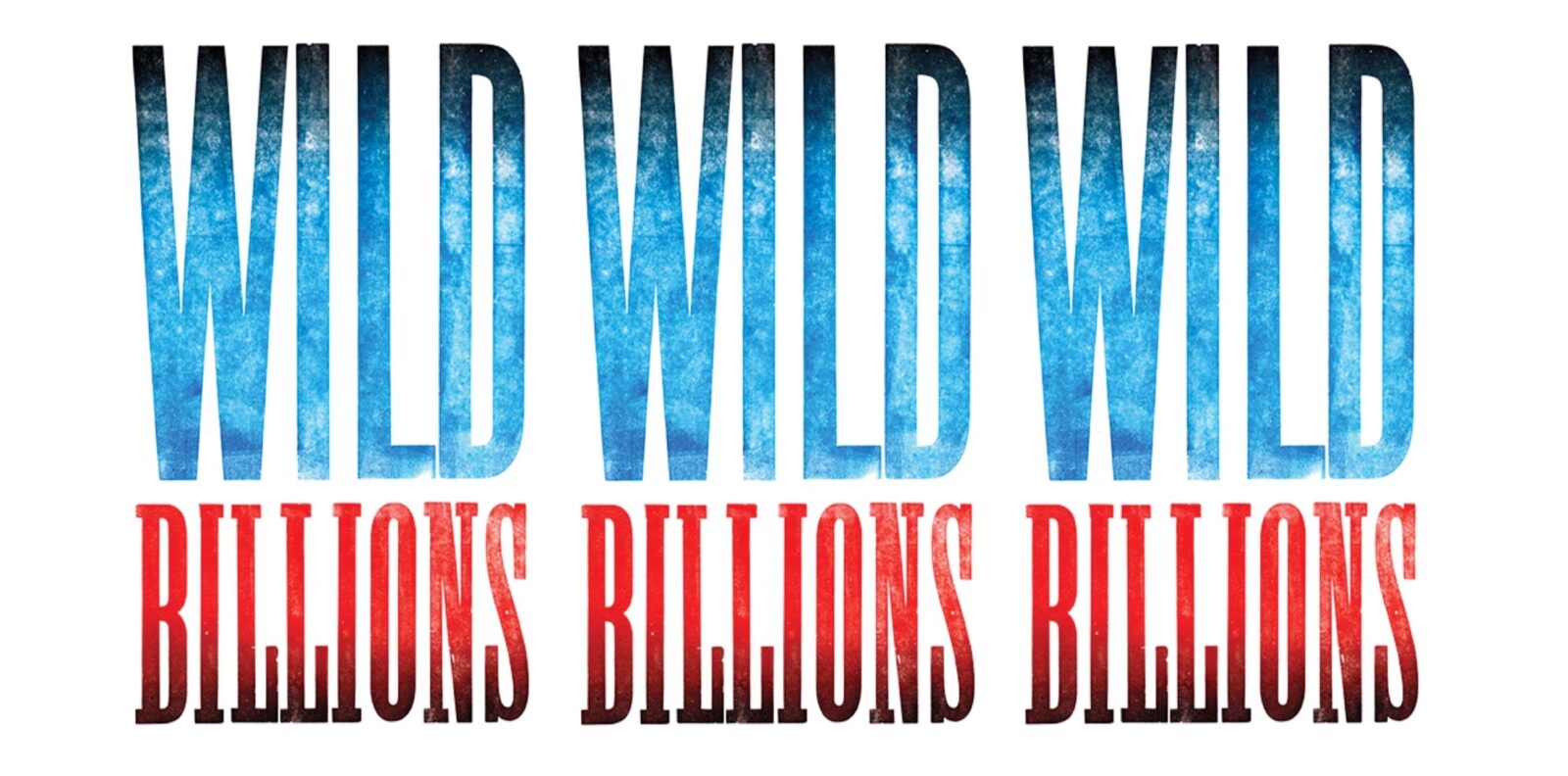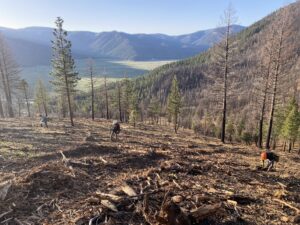Historic amounts of federal money are flowing into the Bay Area and California thanks to the Bipartisan Infrastructure Law (BIL) and Inflation Reduction Act (IRA). How does your organization or agency apply for some of it?
After talking with experts and grant awardees to wrap our minds around this process, we’ve come up with a quick guide and database for those seeking grants related to nature-based solutions in northern California available through BIL and IRA.

About this project: Bay Nature is reporting on funding for nature in BIL and IRA. Tell us what you think or send us a tip at wildbillions@baynature.org, and read more at our Wild Billions project page.
What is BIL? What is IRA?
Since 2021, two pieces of federal legislation, signature accomplishments of the Biden administration, have promised to invest nearly $1 trillion in infrastructure and clean energy. The Bipartisan Infrastructure Law (BIL) was signed into law in mid-November 2021, allocating $550 billion over the next five years toward developing infrastructure—including coastal resilience and green infrastructure. (It’s worth knowing the bill’s official name is the Infrastructure Investment and Jobs Act, or the IIJA, and that BIL is a nickname.) In mid-August 2022, the Inflation Reduction Act (IRA) became law, with the goal of nearly $400 billion toward green energy, healthcare spending, and climate-related goals.
While neither BIL nor IRA are strictly environmental legislation, together they account for roughly $106 billion that will go toward nature-based solutions across the nation, according to Bay Nature’s estimate.
What is “Wild Billions” money?
Wild Billions is the catchy name of Bay Nature’s reporting project and has no official meaning outside of Bay Nature. We use it to refer to the federal money from BIL and IRA earmarked for projects related to nature-based solutions in Northern California and the San Francisco Bay Area. And “nature-based solutions” is a catchy name for all kinds of projects that protect or restore natural and modified ecosystems to address environmental and societal challenges.
The billions that we’re tracking can come as grants directly from federal agencies, like the Environmental Protection Agency (EPA) or the National Oceanic and Atmospheric Administration (NOAA), or are first appropriated through state agencies, such as the recent grants to the California State Coastal Conservancy. These passthrough agencies will then grant out the funds to nonprofits, government agencies, or other organizations.
Where can I find these grant opportunities?
For a one-stop list of every federal grant program, check out the Grants.gov searchable database. But because the list is so comprehensive—containing every federal funding opportunity, including grants that are administered internationally, or funds meant for private entities—it takes a bit of tinkering with filters to make the page relevant to specific needs.
It might be easier to look through the federal departments and state-level agencies websites whose focus areas intersect with yours.
- The U.S. Department of Agriculture (USDA) funds rural investments, including farming initiatives, small-acreage forest stewardship, and the Community Wildfire Defense Grant. (Check here for USDA’s IRA announcements, and here for their BIL announcements.)
- Within the USDA, the Natural Resources Conservation Service (NRCS) is tasked with granting $20 billion to farmers. (NRCS’s California office announcements are here.)
- NOAA, or the National Oceanic and Atmospheric Administration, has received about $3 billion from BIL and IRA respectively, which will fund climate-related monitoring, coastal resilience, and the safekeeping of fisheries and habitats. (Here’s a link to NOAA’s IRA announcements, and one for their BIL announcements.)
- The Environmental Protection Agency, or EPA, funds various programs directly related to conservation, especially through the San Francisco Bay Water Quality Improvement Fund, which has received additional funding through BIL. (Here are SFBWQIF’s BIL announcements, and a more generalized EPA BIL and IRA directory.)
For federal agencies without BIL and IRA announcement pages, we recommend signing up for their newsletters—like “California News Bytes” from the Bureau of Land Management—to help bring possible opportunities to your inbox. Check the bureau or agency websites that fall under the Department of the Interior, such as the National Parks Service (BIL page, IRA page) and the Bureau of Reclamation (BIL funding opportunities here, and WaterSMART grants, a special program dedicated to irrigation or water supply, can be found here), and Bureau of Indian Affairs (BIL page).
Some organizations outsource the task of gathering opportunities, either in part or altogether. Lauren Weston, executive director of the Palo Alto-based environmental nonprofit Acterra, says her organization subscribes to multiple directories and notification services—with monthly fees ranging from $100 to $1,000—that deliver tailored opportunities directly to the organization.
Isn’t there an easier way?
We’re glad you asked. Bay Nature has compiled available funding pots from White House data, selecting those that are relevant to funding nature-based solutions. The following database is fully searchable—type in “wildfire” or “sea level” to see it in action.
Our database contains a limited selection of BIL and IRA funding announcements, and not all of these programs are currently accepting applications. New announcements for open funding periods are happening constantly, though this database does give an overview of what funding is in the works and what to keep an eye out for.
Other organizations have also taken on the mission of tracking and listing funding opportunities. The Environmental Defense Fund, an international advocacy group, published an IRA announcements tracker and a related database for climate-related spending through the bill.
There’s so many grants—how do I narrow it down?
The good news (and the bad news) is that many opportunities that seem like a great fit at first glance may ultimately have narrow eligibility criteria. Many do not accept Tribal nations as applicants, or require 501(c)(3) status, or ask for upwards of a 40 percent cost-match, where the applicant is expected to match a certain percentage of the grant with their own funds. Some also require lengthy feasibility studies that can be 1-2 years of work on their own.
Over repeated consultations with project managers and writers, Weston says Acterra narrows down a prospect pool of about 350 grants, ultimately applying for only about five to six each month.
Santa Clara Valley Water, a public agency that was recently awarded $3.8 million in BIL money through EPA, employs a full-time grant administrator and three analysts. Still, treasury and debt manager Charlene Sun says the federal grant process is “onerous” and that it takes four to eight weeks to complete an application.
“The challenge really is looking at what your bandwidth is to apply for grants, and which grants would you be most competitive for, and making those subjective decisions about where you’re going to invest your capacity to apply,” she says.
Are there other criteria I should know about?
Though these aren’t all criteria for eligibility, the following added expectations for federal grants are good to be aware of before applying.
- Build America Buy America Act: A law enacted alongside BIL, BABAA requires that all iron, steel, manufactured products, and construction materials used in federally funded projects for infrastructure must be produced in the United States.
- Justice40: This refers to a federal mandate that around 40 percent of the benefits of certain Justice40-covered federal spending (BIL and IRA fall under this) go toward disadvantaged communities that are marginalized, underserved, and overburdened by pollution. In practice, it looks like higher requirements for community involvement and reporting of outcomes.
- Tribal Eligibility: There is a subset of IRA programs that are eligible for tribes and tribal organizations. BIL and other programs may have Tribal eligibility as well, but it’s not the case for all programs.
- Reporting and Monitoring Requirements: Federal grants often require extensive results monitoring and the fulfillment of reporting requirements, making them a challenge to implement even after they’re received.
Can I still access these funds without a proposal writer? Or 501(c)(3) status?
Yes! Despite all the restrictions and red tape, leaders of smaller community-based organizations are receiving grants. Climate Resilient Communities, a nonprofit that works on creating community planning and action around climate change in East Palo Alto and Menlo Park, is one such case.
As the recipient of more than $350,000 through the EPA, CRC executive director Violet Wulf-Saena says organizations like hers are able to “bridge the gap” between larger organizations and the communities they want to serve. She says that funds coming in through BIL and IRA will often require or strongly recommend that a project includes community engagement—that is, meaningfully involving community members, especially those in underserved areas.
The lead applicant of a collaborative grant—usually, a larger organization with more resources to spare—will often seek out smaller organizations to tackle different parts of a project, and even assist with their section of the grant, Wulf-Saena says. “We can all address different components of the project that, together, we will be able to implement a successful project for the community or for the county or for the city.”
Though CRC has no staff writers, Wulf-Saena says she contracts an outside grant writer especially for proposals she feels are worth the added investment. At the time of applying for the EPA grant, the organization did not have its 501(c)(3) status, and instead relied on Acterra, as their fiscal sponsor.
Community-based organizations that are well-connected will often be able to work on grants collaboratively with larger organizations that benefit from their connection with the community.
How do I become “well-connected”—at local, state, and federal levels?
The current surge in federal funding presents “a golden opportunity” for collaboration, according to Annie Burke, executive director of Together Bay Area, a coalition of nonprofits, public agencies, and tribes working in Bay Area conservation. “If you’re working on sea level rise, find the trade associations, or the groups, or the coalitions, or the partners who are working on sea level rise, and meet,” Burke says. “Have lunch, go on field trips. Learn from each other.”
Other ways to network include in-person webinars, such as those hosted by the EPA grants team, and the EPA’s San Francisco Bay Water Quality Improvement Fund (SBWQIF). Luisa Valiela, the San Francisco Bay program lead for EPA, acknowledges that the application process for EPA grants involves multiple forms with “not a lot of clarity”—for her, making sure agency representatives are available for screen sharing and one-to-one advice is important, especially if these grants are to reach the recipients in underserved communities. “We’re really slowing it down to kind of be as helpful as possible to demystify what it means to fill out a federal form,” she says.
The California Coastal Conservancy, a state agency managing California’s shoreline, is also a key distributor of some of these federal funds. Their website states that the agency has “significant funding available” for non-profit organizations, public agencies, and federally-recognized tribes. For grant applicants, the Conservancy encourages a technical assistance consultation with the regional manager—Moira McEnepsey—to help check feasibility and eligibility of the proposed project.
The San Francisco Bay Area Joint Venture aims to foster partnerships and collaboration by bringing groups together to secure better funding to protect the Bay’s wildlife. “We try to matchmake and be the connective glue to communicate with everyone,” says Nikki Roach, policy & communications coordinator for SFBJV. They track available funding from various sources and also organize a regional monthly “working group”—every second Thursday from 3-4 PM—to identify federal and state funds, collaborate on proposals, and share skills between climate-based action groups. “Each granting agency and grant opportunity has a contact person,” advises Roach, “On our funding spreadsheet, we list all those contacts, and they always encourage you to reach out to them directly.”





